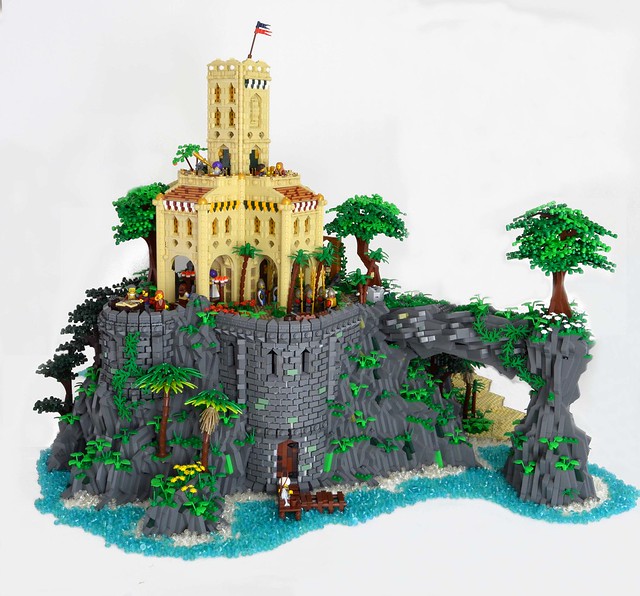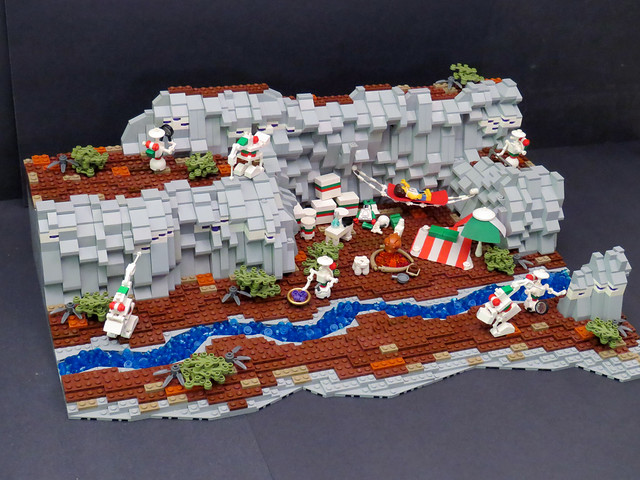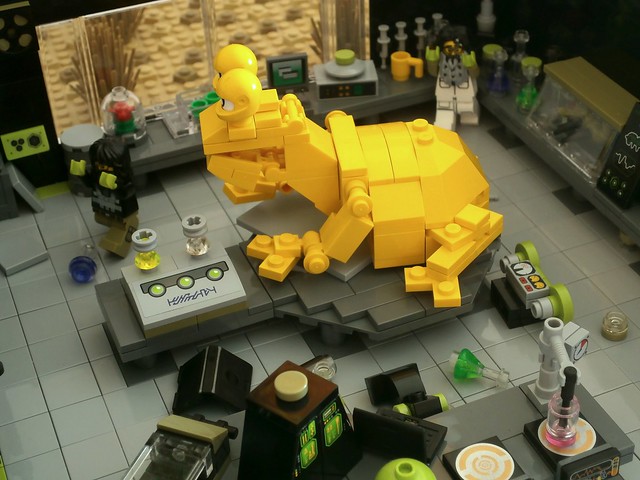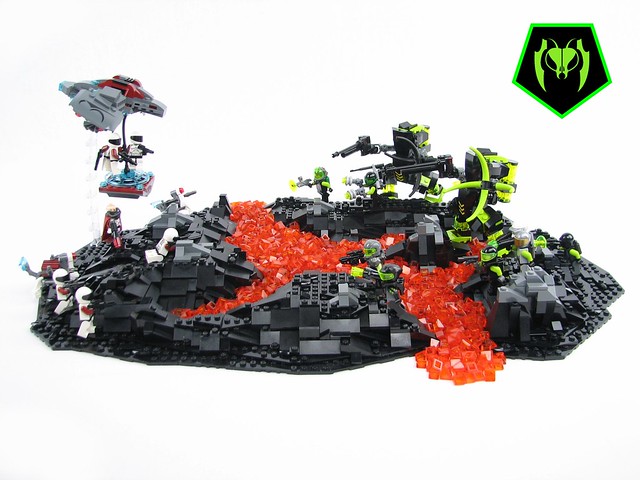If there's one thing you're guaranteed to hear from the general public at an exhibit, it's some variant of "When I was a kid, it was all just basic bricks". And when it's just a well intentioned comment on the detail and complexity of your models, it's not a problem.
If there are three things you're guaranteed to see in the comments section of any mainstream news or comment article about Lego, it's these:
- "When I was a kid, it was all just basic bricks" and its related cousin:
- "All the sets come with instructions these days, and you can't make anything else with them"
- "Lego is too expensive these days"
Is this a problem? That depends on whether or not these claims are true. The third was comprehensively disproved in a
fantastic blog post by Andrew Sielen, along with the commonly held belief (even among AFOLs) that licensed sets are more expensive.
This time, I'll take a look at the claims that more sets come with instructions than in the past and/or you can't get basic brick boxes/buckets these days.
Next time I'll try to see if today's pieces are more specialised and less useful than they used to be. To tide you over until that post appears, try reading New Elementary's
excellent post on the matter. And in a third and final post in this series I'll summarise the findings and give my opinions on whether they're a problem or not.
Do all sets come with instructions? When people say this, they usually refer to the boxes or buckets of basic Lego bricks they had as a kid. These still exist! Multiple boxes/buckets of bricks are available right now, under the theme
Bricks and More. However, most of them do seem to come with some instructions for suggested models. Let's be ultra strict - are there any currently available Lego sets with no instructions whatsoever?
 |
It even comes with a brick separator in case you don't already have
at least 300 of them. |
Yes!
10664 Creative Tower has no instructions, and is mostly 'basic' bricks. It would surely satisfy even the most diehard instruction and 'specialised' brick hater.
[EDIT: And, as pointed out in the comments, every Lego store has an entire Pick a Brick wall dedicated to selling just bricks, which generally seems to be a third to a half 'basic' bricks.]
Ok, that's one example, but surely there were more of these instructionless sets back in the good old days? One simple way to see if that's true would be to find the proportion of sets released each year with instructions, and see how that has changed over time. This is relatively easy - it's possible to see a summary of the number of
sets released each year at Bricklink, and similarly to see the number of
instructions released each year. So we simply divide one by the other to get our proportions.
Conclusion: If you were a kid in before the in or before the 80's, you may be on to something when you say there are fewer sets without instructions, UNLESS you were a kid in the 70's, when it was about the same. But these numbers don't look quite right. Only three quarters of sets had instructions in 2013? In fact, the raw numbers state 154 sets without instructions, which just doesn't seem right. And indeed it isn't, because Bricklink counts a lot of things as separate sets that really aren't. For example, 75 of those 154 sets are the individual builds from the advent calendars, for which there aren't separate instructions listed. So we can't quite rely on these numbers.
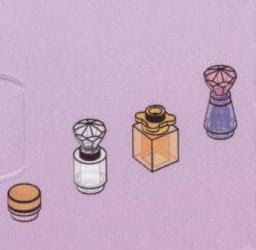 |
| A set, according to Bricklink. |
Is there another source of set numbers? Yes. Brickset has a brilliant query builder that allows you to run custom queries of its database. I did a simple query for
sets in the 'normal' category, which excludes things like keychains and weird promotional items, then used these numbers with the instruction numbers from Bricklink*. The percentages from this are more in line with what I'd expect:
Ok,
apart from the 130% of sets in 1969 that came with instructions, the percentages are more in line with what I'd expect! And I think that's partly because the records for the 60's and early 70's aren't entirely reliable.
[EDIT: I wasn't clear enough here that this is a problem caused by using numbers from different databases. Since Brickset and Bricklink don't always agree, particularly in the early years, the occasional weird result is not unexpected if you divide one set of numbers by the other]. If we ignore the 60's, the conclusions are more or less the same as before - the 70's were relatively instruction heavy, and since the 80's the proportion of sets with instructions has been increasing.
One more test. Let's look at the beloved basic brick boxes/buckets directly this time, and not worry if they happen to come with instructions for a few example models. From Brickset's themes, the ones that appear to be mainly comprised of these brick boxes/buckets, and that aren't Dacta or Educational sets, are
Basic,
Bricks and More,
Bulk Bricks,
Creator (pre-2007),
Freestyle,
Make and Create, and
Universal Building Set. So I did a
query for these that excluded sets with fewer than 100 pieces, to get rid of odd promotional sets and polybags. Because Creator became mostly instruction sets after 2006 (albeit usually with 3 different models) I had to do a
query for it separately, excluding sets from 2007 onwards, and add those numbers.
This seems to show that the number of basic brick boxes/buckets released has been increasing over time, with a slight dip down these past few years. But many more sets are released these days, so the more relevant quantity is the proportion of sets each year that are basic brick boxes/buckets:
Ignoring the 60's, we see that the proportion of normal sets each year that are basic brick boxes/buckets fluctuates between 0 and 15%, but on average tends to be about 5%, with a slight downwards trend recently.
So, what do we conclude? In this case I think we may be tempted to concede that Joe Public has a point - there seem to be more sets with instructions these days. I must admit I was surprised that most of the basic brick/boxes available today come with instructions, even if they're just a few example models. I don't think this is really a problem - you can always throw away the instructions after all! I've read that the reason that Lego stopped including back of the box pictures of alternate models on all sets (they were always there when I was a kid) was because they got complaints from parents that their children got upset because they couldn't build these models. So maybe the instructions are more common these days because people actually wanted them.
When we look at the average proportion of sets each decade that are basic brick/boxes, it's basically been hovering around 5% ever since Lego started including instructions with models. It looks to have been on the slide over the past 20 years, though this is partly due to the increase in total numbers of sets released. For example, the average number of normal sets released per year in the 70's (when the proportion of buckets was highest) was about 62, whereas in the 2010s it's been 387. If we take the 70's proportion of 6.4% and apply it to 387, we get about 25. To those complaining about the lack of such sets, ask yourself if there's a market for an average of 25 basic brick buckets/boxes every year? Has there ever been?
Final conclusions
First, let me say that
if you disagree with any of the methods or assumptions I've used, then please leave a comment, especially if you can think of a better way. I want this to be as good as possible, and won't take it personally. Now, on to the conclusions:
If you were a kid in the 50's: Feel free to say there were fewer sets with instructions in your day - essentially there weren't any!
[EDIT: See the comments for a discussion of whether there were actually instructions then or not. It seems at least that there weren't the modern, detailed instructions that we're familiar with today.]
If you were a kid in the 60's: Dig out your old sets and memories and help update the records, because the stats don't have a clear message to tell. We can at least say that there weren't any sets with instructions before 1964.
[EDIT: Not quite, see above]
If you were a kid in the 70's: There were fewer sets with instructions in your day (72% of normal sets vs. 97% in the 2010s) but you actually grew up in a time of relatively many instructions compared to the following decades. There were slightly more basic brick boxes/buckets in your day (6.4% of all normal sets vs. 2.3% in the 2010s).
If you were a kid in the 80's: There really were fewer instructions in your day (55% of normal sets vs 97% in the 2010s) and you grew up in the least 'instructioned' time since instructions began. There were slightly more basic brick boxes/buckets in your day (4.3% of all normal sets vs. 2.3% in the 2010s).
If you were a kid in the 90's: There were fewer instructions in your day (64% of normal sets vs 97% in the 2010s). There were slightly more basic brick boxes/buckets in your day (6.2% of all normal sets vs. 2.3% in the 2010s).
If you were a kid in the 2000's: There were fewer instructions in your day (79% of normal sets vs 97% in the 2010s). There were slightly more basic brick boxes/buckets in your day (4.1% of all normal sets vs. 2.3% in the 2010s).
If you are a kid in the 2010's: Then why on earth are you reading this?? Go play with your Lego, and be glad you aren't a boring old fart who thinks
this tow truck is better than
this one.
 |
I mean, really? Images from Brickset. |
* Why carry on using the Bricklink instruction numbers? Simply because it's the most complete record. Brickset only has the instructions that are provided by Lego Customer Services, which are woefully incomplete before the mid-nineties. Peeron is the other well-known source of instructions, but seemingly hasn't been kept properly up to date for about 10 years now, and hasn't had any new scans since 2010.
[EDIT: Purple Dave asked in the comments for a graph of absolute number of sets without instructions, so here it is:
The overall trend is similar to that of the number of basic brick boxes/buckets, which is encouraging.]
